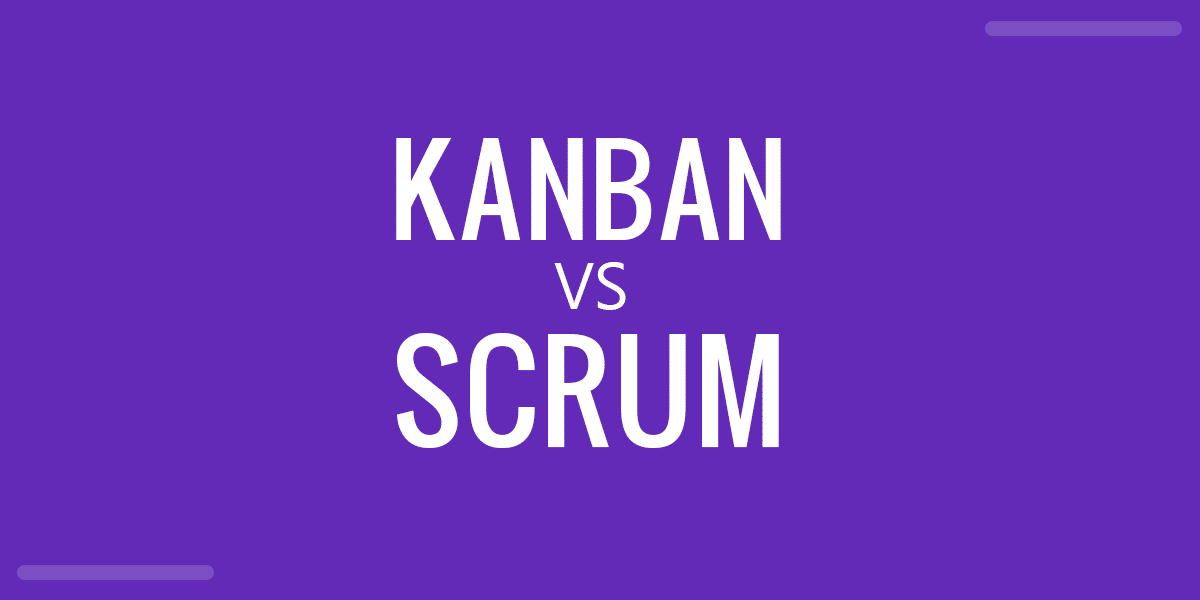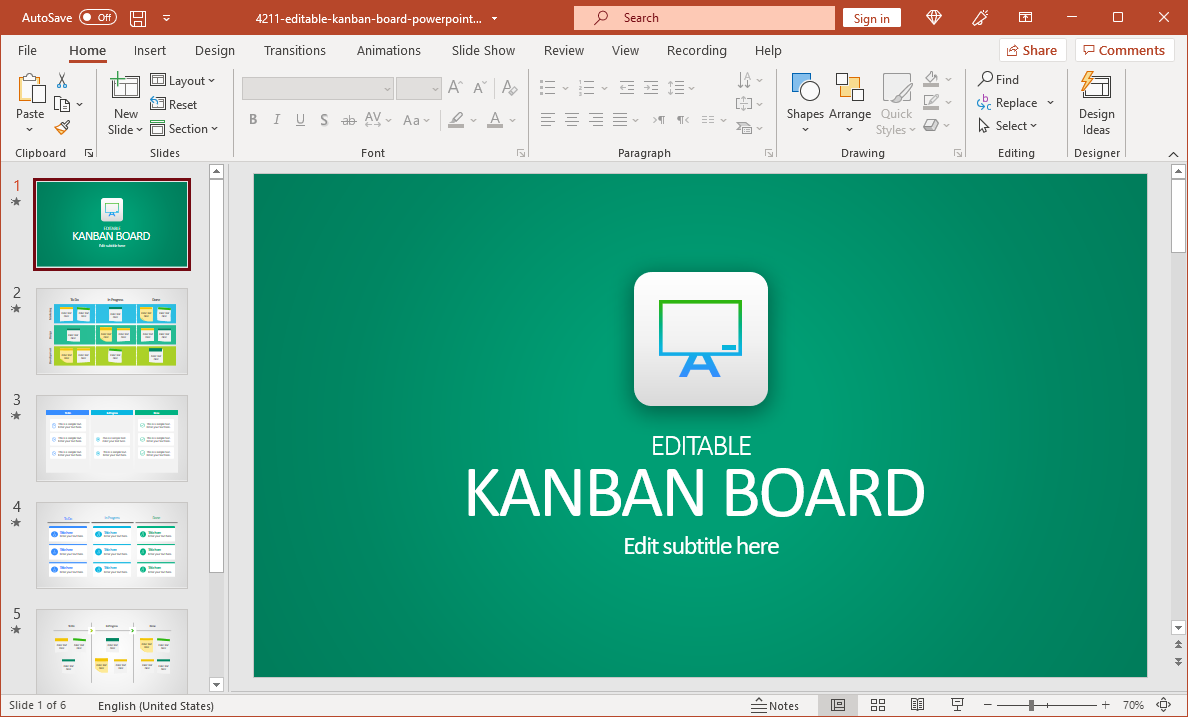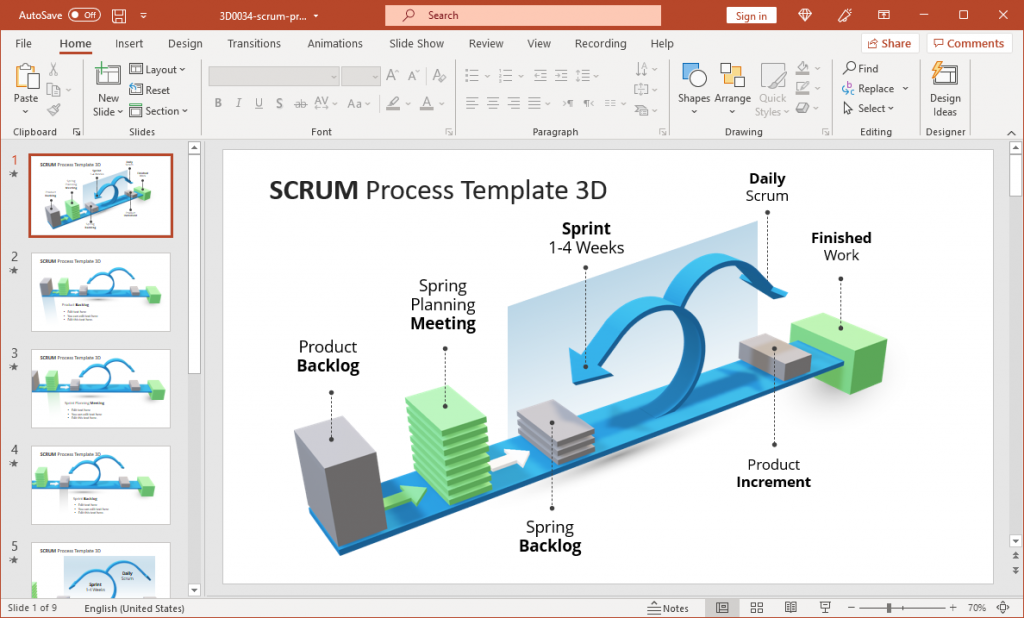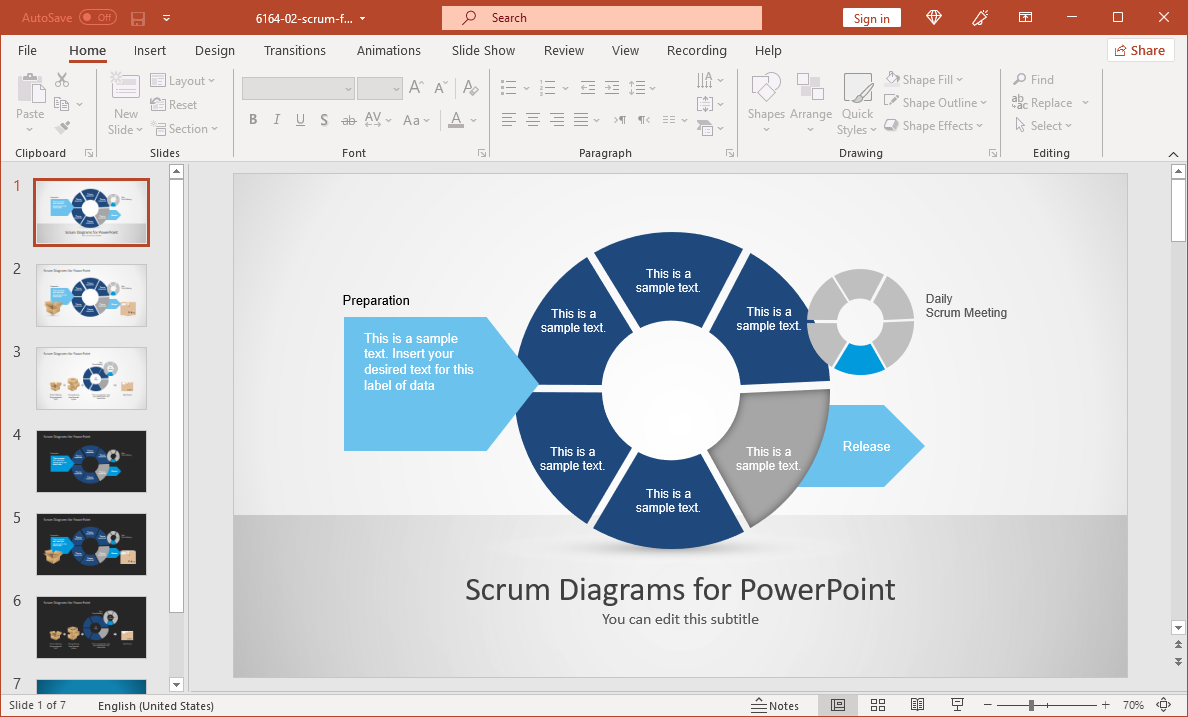Kanban vs. Scrum: Examples + Templates for Agile Presentations
Last updated on July 15th, 2024

If you’re associated with software development in some way, you might have heard of Kanban and Scrum. Both are considered as a part of practices used for making professionals, teams, and organizations more effective. The term Agile is often used for this set of practices. Let’s take a look at both these agile methodologies in a bit more detail, followed by a list of Kanban and Scrum PowerPoint templates that you can use for your presentations on Agile.
What is Kanban?
Kanban in Japanese stands for billboard or signboard, which is also the format information is presented using this agile software development methodology. Kanban is a part of a manufacturing system called just-in-time manufacturing or lean manufacturing. It was developed by a Japanese industrial engineer, Taiichi Ohno at Toyota to improve efficiency. The Kanban system developed by Taiichi Ohno limited the buildup of items and inventory to reduce inefficiency. Kanban was later adapted for software development, IT management, HR, and business processes by David Anderson.

Kanban’s visual representation comes in the form of cards that are moved to manage workflow. Moving a Kanban card triggers an action, such as replenishing stocks or moving items. There are also electronic variants of known as Electronic Kanban or E-Kanban that make use of electronic boards. You can learn more about E-Kanban from our post about different Kanban software.
What is Scrum?
Over the years Scrum has been widely used in software development, with applications in various other fields including research, marketing, sales, etc. The name Scrum itself has been borrowed from rugby since the framework requires teams to work closely to complete sprints. Unlike conventional approaches, Scrum consisting of self-organizing teams that work and meet in a disciplined format to discuss the work completed, review feedback, and reflect to improve aspects of their work.
Scrum is used for catering to the needs of complex product environments, with ten or fewer members working with certain goals. Work is completed over sprints, a period of 1-4 weeks. During the sprints, progress for the workflow is assessed every day by Scrum teams for 15 minutes with time-boxed meetings.
Difference between Kanban and Scrum
Sometimes, people can get confused about Kanban and Scrum. Some might even ask the question. ‘is Kanban Scrum’? While both are agile methodologies and have various similarities such as reducing waste and working iteratively, both methodologies also have stark differences.
1. Roles and Responsibilities
The roles and responsibilities are not well defined in Kanban, whereas in Scrum the roles of team members are clearly laid out including the product owner, Scrum master, and the development team.
2. Delivery and Timelines
In Kanban delivery is based on needs, using a method that focuses on production based on the needs of the process, such as just-in-time manufacturing. Whereas workflow in Scrum is in the form of sprints that consist of a set timeframe where a working product needs to be delivered.
3. Difference in use of Pull System
While both Kanban and Scrum use the ‘pull system’ to prioritize delivery and tasks, these are used quite differently in each. In Kanban a task is pulled after the previous one is complete. However, in Scrum a complete batch is pulled at a time.
4. Mechanism for Modification and Changes
Kanban encourages making changes mid-stream during a project, whereas in Scrum making changes between a sprint isn’t encouraged.
5. Measure of Productivity
Kanban uses cycle time to measure the completion of work from the beginning to the end. Whereas Scrum uses successive sprints over 1-4 weeks.
6. Flexible vs Stable Project Priorities
Kanban is most suited for projects which require a fair amount of flexibility, whereas Scrum is meant for teams with stable project priorities.
Effective Kanban and Scrum PowerPoint Templates
If you are looking to present your Kanban and Scrum presentations or want a PowerPoint template that can help you display your workflow using these agile methodologies, we have a few templates that you might find useful.
1. Editable Kanban Board PowerPoint Template
This is a presentation template with the sample, editable boards that you can edit to create and present a visual representation of your Kanban boards. The notes depicted in sample slides are editable, allowing you to create a replica of actual boards or create E-Kanban board slides.

Go to Editable Kanban Board PowerPoint Templates
2. 3D Animated Scrum Process PowerPoint Template
This is a 3D animated version of Scrum sprints. You can visually present the process of sprints, as well as display your project sprints using PowerPoint slides.

Go to 3D Animated Scrum Process PowerPoint Template
3. Useful Scrum Diagrams for PowerPoint
This is another Scrum themed PowerPoint template which provides editable diagrams for visualizing sprints and daily workflow using Scrum. the template can be useful for teaching Scrum as a concept to newbies, as well as to visually represent sprints.

Go to Scrum Diagrams for PowerPoint
Final Words
Kanban and Scrum are both agile methodologies with certain benefits and limitations. While Kanban is meant for a more flexible environment, Scrum is meant for stable project requirements, where a team can focus on tasks without worrying about too many changes between each sprint. Similarly, the roles and responsibilities, timelines, workflow, and the use of the pull system differ quite significantly between the two methodologies. Whether your team can work best using Kanban or Scrum can depend upon several factors including your project requirements, business model, and the orientation of your team. Picking the right methodology can greatly improve workflow, help reduce waste, and enable better management of the timely delivery of better quality products.
